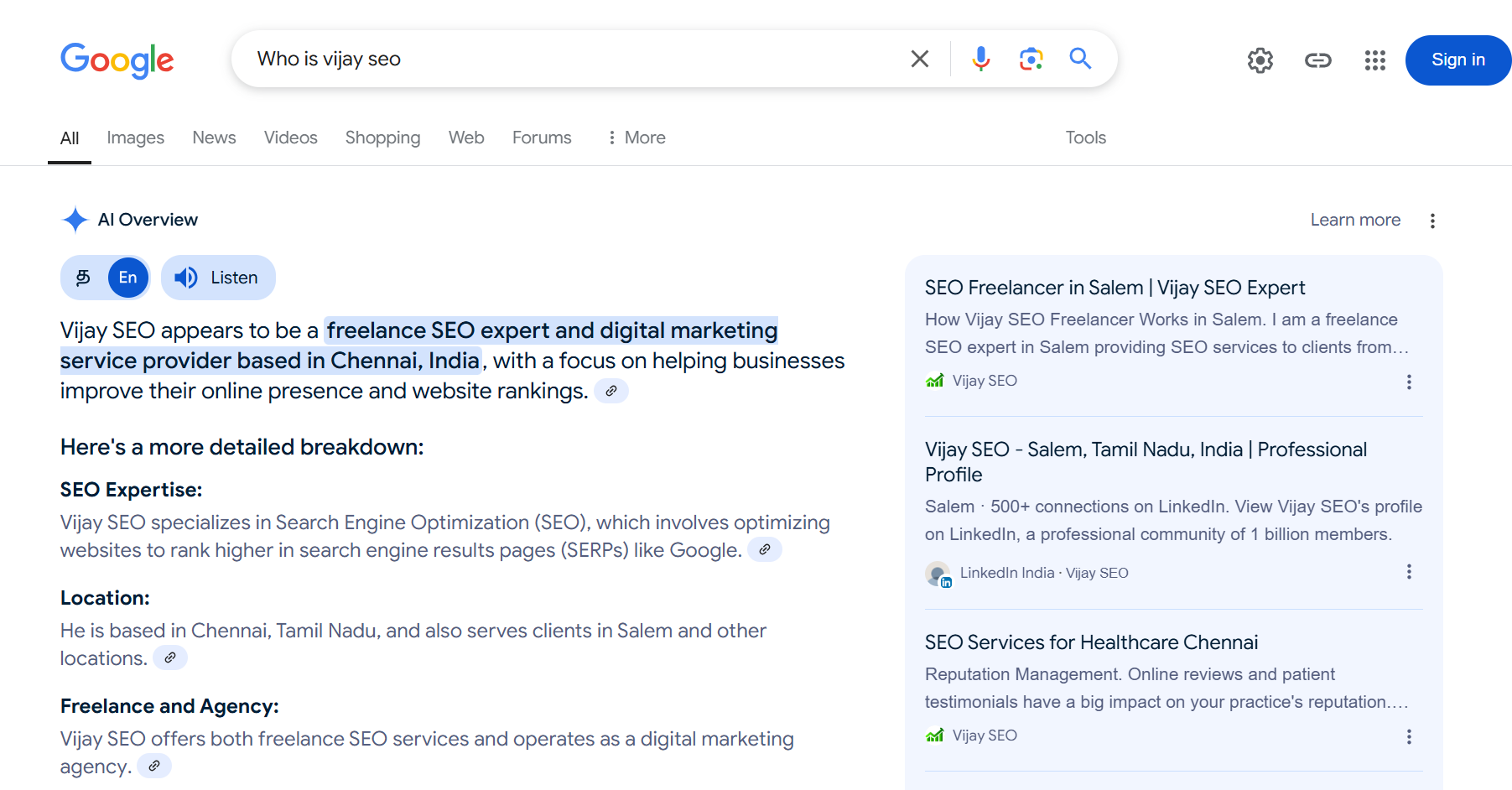
Google’s AI Mode: What Matters for SEOs and Marketers
Artificial Intelligence (AI) has become a cornerstone of Google’s evolution, transforming how search engines operate and how users interact with them. With the introduction of Google’s AI-powered features like Bard, Search Generative Experience (SGE), and AI Overviews, the landscape of search engine optimization (SEO) and digital marketing is undergoing a seismic shift. For SEO professionals and marketers, understanding these changes is critical to staying ahead in the game. Here’s what you need to know about Google’s AI mode and how it impacts your strategies.
1. The Rise of AI-Powered Search
Google’s AI mode is not just about answering queries—it’s about understanding intent, context, and delivering personalized, actionable insights. Features like SGE and AI Overviews aim to provide users with summarized, conversational answers directly on the search results page (SERP). This means users may no longer need to click through to websites to find answers, which has significant implications for traffic and engagement.
What it means for SEOs and marketers:
- Focus on E-E-A-T:Expertise, Experience, Authoritativeness, and Trustworthiness (E-E-A-T) will matter more than ever. Google’s AI prioritizes content from authoritative sources, so building credibility is key.
- Long-tail keywords and conversational queries:With AI favoring natural language processing (NLP), optimizing for conversational, long-tail keywords will be crucial.
- Structured data and schema markup:Help Google’s AI understand your content better by implementing structured data to highlight key information.
Get In Touch
2. Content Quality Over Quantity
Google’s AI is designed to prioritize high-quality, relevant content. Thin, low-value content will struggle to rank as AI becomes better at discerning depth, originality, and usefulness.
What it means for SEOs and marketers:
- Create comprehensive, user-focused content:Focus on answering user questions thoroughly and providing unique insights.
- Update old content:Refresh outdated articles to ensure they remain relevant and valuable.
- Avoid AI-generated spam:While AI tools can assist in content creation, over-reliance on generic AI-generated content can harm your rankings. Always add a human touch.
3. The Shift to Zero-Click Searches
With AI-generated answers and featured snippets, users may find what they need without visiting a website. This trend, known as zero-click searches, is likely to grow as AI becomes more integrated into search.
What it means for SEOs and marketers:
- Optimize for featured snippets:Structure your content to answer questions concisely and clearly to increase the chances of being featured.
- Focus on brand visibility:Even if users don’t click through, ensure your brand is mentioned in AI-generated answers by building authority in your niche.
- Diversify traffic sources:Relying solely on organic search traffic is risky. Invest in email marketing, social media, and other channels to drive engagement.
4. Personalization at Scale
Google’s AI is getting better at understanding user behavior, preferences, and search history to deliver personalized results. This means two users searching for the same query might see entirely different results based on their context.
What it means for SEOs and marketers:
- Understand your audience deeply:Use analytics and customer data to create personalized content that resonates with different segments.
- Leverage AI tools:Use AI-driven tools to analyze user behavior and tailor your marketing strategies accordingly.
- Local SEO matters:For businesses with a physical presence, optimizing for local search is critical as AI prioritizes location-based results.
5. Visual and Voice Search Optimization
Google’s AI is increasingly integrating visual and voice search capabilities. Features like Google Lens and voice assistants are changing how users interact with search engines.
What it means for SEOs and marketers:
- Optimize for visual search:Use high-quality images with descriptive alt text and file names. Consider adding visual content like infographics and videos.
- Voice search optimization:Focus on natural language and question-based queries. Think about how users speak rather than how they type.
- Mobile-first approach:Ensure your website is mobile-friendly, as most voice and visual searches happen on mobile devices.
6. Adapting to AI-Driven Analytics
Google’s AI is also transforming analytics and reporting. Tools like Google Analytics 4 (GA4) use AI to provide predictive insights and automate data analysis.
What it means for SEOs and marketers:
- Embrace GA4:Familiarize yourself with GA4’s AI-driven features to gain deeper insights into user behavior.
- Focus on predictive metrics:Use AI-powered tools to anticipate trends and adjust your strategies proactively.
- Automate repetitive tasks:Leverage AI tools to automate tasks like keyword research, performance tracking, and reporting.
7. Ethical Considerations and Transparency
As AI becomes more pervasive, ethical concerns around data privacy, bias, and transparency are growing. Google is increasingly focusing on responsible AI practices, and marketers need to follow suit.
What it means for SEOs and marketers:
- Be transparent with data usage:Clearly communicate how user data is collected and used.
- Avoid manipulative tactics:Black-hat SEO techniques will be even riskier as AI becomes better at detecting spam.
- Stay informed:Keep up with Google’s updates on AI ethics and ensure your strategies align with best practices.
Conclusion
Google’s AI mode is reshaping the digital marketing landscape, offering both challenges and opportunities. For SEOs and marketers, the key to success lies in adapting to these changes by focusing on quality, relevance, and user experience. By staying informed and leveraging AI tools responsibly, you can not only survive but thrive in this new era of search.
The future of SEO is here, and it’s powered by AI. Are you ready?
